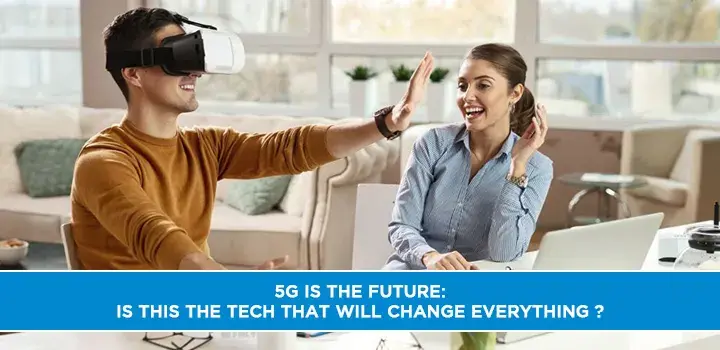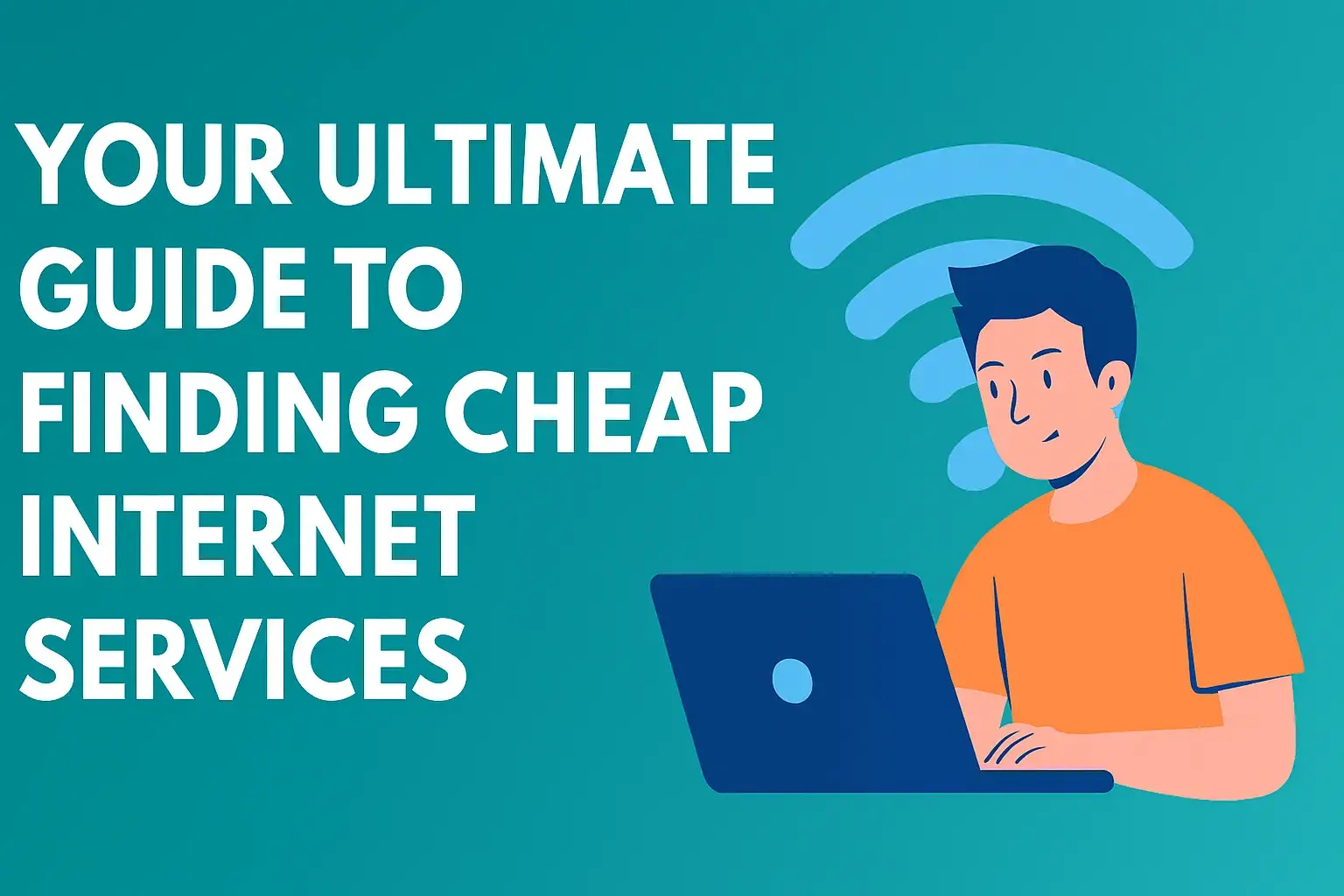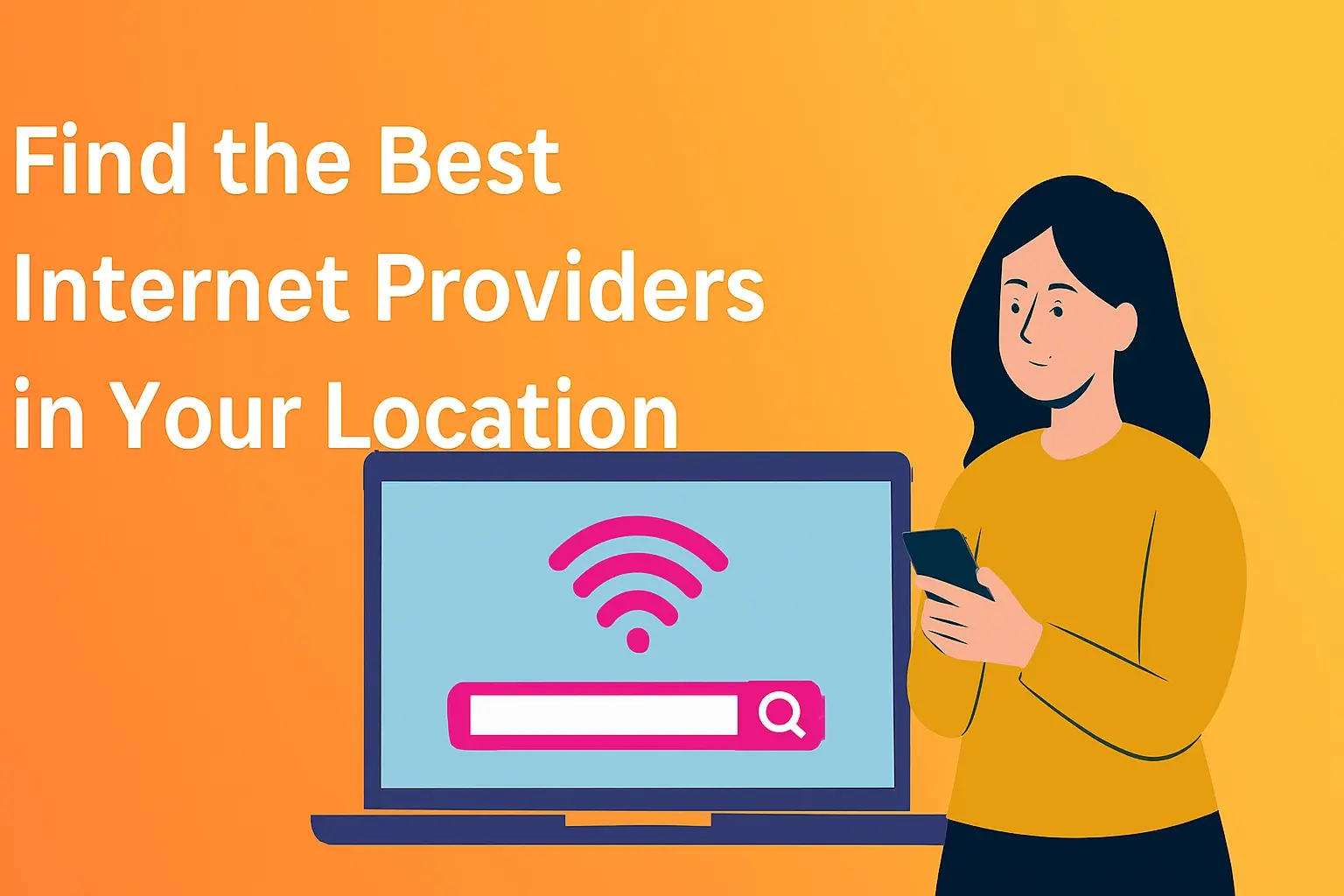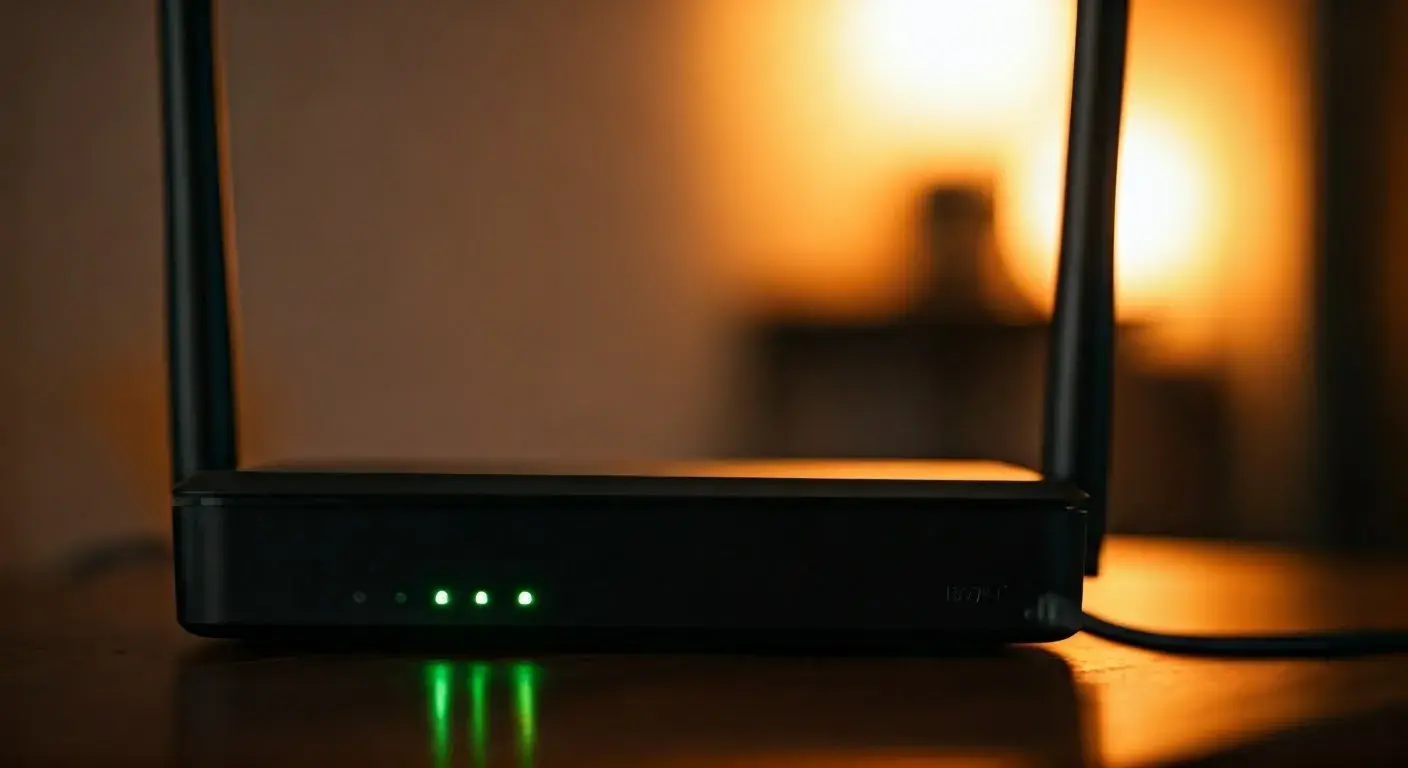5G is the future: Is this the tech that will change everything?

5G isn't just an upgrade; it's a fundamental shift in how we connect and interact. This blog post explores whether 5G truly represents the future, examining its transformative potential across industries and daily life, and what it means for the world in 2025 and beyond.
What Exactly is 5G? Beyond Faster Speeds
When we talk about 5G, the immediate thought for many is simply "faster internet." While it's true that 5G offers significantly improved download and upload speeds compared to its predecessors, this perception dramatically undersells its true potential. 5G, the fifth generation of cellular technology, represents a paradigm shift designed from the ground up to support a vastly more connected and intelligent world. It’s not just about downloading movies in seconds; it’s about enabling entirely new categories of devices and applications that were previously impossible.
At its core, 5G is built on a foundation of three key pillars: enhanced Mobile Broadband (eMBB), Ultra-Reliable Low-Latency Communications (URLLC), and massive Machine Type Communications (mMTC). Each of these pillars addresses a specific set of requirements that are crucial for the next wave of technological innovation. eMBB focuses on delivering higher data speeds and greater capacity, directly impacting our mobile experiences. URLLC, on the other hand, is designed for applications where even a millisecond of delay can be critical, such as autonomous vehicles and remote surgery. Finally, mMTC is engineered to support an enormous density of connected devices, paving the way for the true Internet of Things (IoT) at scale. By excelling in these three areas, 5G moves beyond being just a faster internet service to become a foundational network for a hyper-connected future.
5G vs. 4G LTE: A Quantum Leap, Not Just an Increment
The difference between 4G LTE and 5G is not merely an evolutionary step; it's a revolutionary leap. While 4G LTE brought us reliable mobile broadband, enabling streaming video and seamless web browsing on the go, it was primarily designed for human-to-human communication. 5G, conversely, is architected to handle both human-to-human and machine-to-machine (M2M) communication with unprecedented efficiency and capability. This fundamental difference in design philosophy unlocks a universe of possibilities.
Let's break down the key distinctions:
| Feature | 4G LTE | 5G |
|---|---|---|
| Peak Download Speed | Up to 1 Gbps (theoretical) | Up to 10 Gbps (theoretical) |
| Latency | ~50-100 milliseconds | As low as 1 millisecond |
| Capacity / Device Density | Lower (thousands of devices per square km) | Massive (up to 1 million devices per square km) |
| Network Slicing | Limited/None | Yes (dedicated virtual networks) |
| Primary Use Case | Enhanced mobile broadband for consumers | eMBB, URLLC, mMTC (IoT, industry, critical comms) |
The most striking difference lies in latency. 4G LTE’s latency, while acceptable for most consumer applications, is far too high for real-time control systems or mission-critical operations. 5G’s near-instantaneous response times are the enabler for technologies like autonomous driving, where split-second decisions are paramount for safety. Furthermore, the ability of 5G to support a vastly higher density of devices is crucial for the proliferation of the Internet of Things (IoT). Imagine a smart city where every sensor, traffic light, and utility meter is connected and communicating in real-time – this is the promise of mMTC enabled by 5G.
Network slicing is another groundbreaking feature of 5G. This allows operators to create multiple virtual networks on a single physical infrastructure, each tailored to specific service requirements. For instance, one slice could be optimized for high-bandwidth video streaming, while another is dedicated to low-latency industrial automation. This flexibility and customization are impossible with 4G LTE and are fundamental to unlocking the diverse applications 5G is designed to support. In essence, 5G isn't just an upgrade to your phone's internet; it's a new networking fabric for the digital age.
The Pillars of 5G: Technologies Driving the Revolution
To achieve its ambitious goals, 5G leverages a suite of advanced technologies that work in concert. These innovations address the fundamental limitations of previous generations and enable the network to be faster, more reliable, and more versatile than ever before. Understanding these core technologies is key to appreciating the full scope of 5G's potential.
1. Millimeter Wave (mmWave) Spectrum
One of the most significant technological advancements in 5G is the utilization of higher frequency bands, particularly the millimeter wave (mmWave) spectrum (typically 24 GHz to 100 GHz). These higher frequencies offer vastly more bandwidth, which translates directly into higher data speeds. While 4G primarily operates in sub-6 GHz bands, mmWave allows for the transmission of enormous amounts of data. However, mmWave signals have a shorter range and are more susceptible to obstruction by physical objects like walls, trees, and even rain. To overcome this, 5G networks employ advanced antenna technologies and a denser deployment of small cells.
2. Massive MIMO (Multiple-Input Multiple-Output)
Massive MIMO is a crucial technology for improving spectral efficiency and capacity. It involves equipping base stations with a significantly larger number of antennas (dozens or even hundreds) compared to traditional 4G base stations. These multiple antennas can transmit and receive signals simultaneously, allowing the network to serve more users and devices concurrently. Massive MIMO also enables beamforming, a technique that directs wireless signals precisely towards individual devices, rather than broadcasting them in all directions. This reduces interference, improves signal quality, and enhances overall network performance.
3. Network Slicing
As mentioned earlier, network slicing is a game-changer. It allows a single physical 5G network infrastructure to be partitioned into multiple virtual networks, each with its own dedicated resources and optimized performance characteristics. This means that different applications or industries can have their own "slice" of the network tailored to their specific needs. For example, a slice for autonomous vehicles might prioritize ultra-low latency and high reliability, while a slice for smart home devices might focus on massive connectivity and energy efficiency. This flexibility allows 5G to serve a diverse range of use cases simultaneously and efficiently.
4. Edge Computing
While not strictly a part of the 5G radio access network, edge computing is a complementary technology that is deeply intertwined with 5G's capabilities. Edge computing brings data processing and storage closer to the source of data generation – the "edge" of the network. By processing data locally rather than sending it all the way to a central cloud server, edge computing significantly reduces latency and bandwidth requirements. This is vital for real-time applications that 5G enables, such as augmented reality (AR), virtual reality (VR), and industrial automation, where immediate data processing is essential for responsiveness.
5. Advanced Antenna Systems
Beyond Massive MIMO, 5G utilizes a range of advanced antenna technologies. These include beamforming, which intelligently directs signals, and beam steering, which can dynamically adjust the direction of these beams to track moving devices. These technologies are essential for overcoming the challenges of higher frequency bands and ensuring reliable connectivity for a vast number of devices in diverse environments. They allow the network to be more efficient and robust, adapting to changing conditions and user demands.
These technologies, working together, form the backbone of the 5G network, enabling it to deliver on its promise of unprecedented speed, low latency, and massive connectivity. The synergy between these innovations is what truly sets 5G apart and positions it as the foundation for future technological advancements.
Industries Poised for Transformation by 5G
The impact of 5G extends far beyond consumer-facing applications; it is set to revolutionize entire industries. By providing the necessary infrastructure for speed, reliability, and massive connectivity, 5G will unlock new efficiencies, create new business models, and fundamentally change how businesses operate. By 2025, we will see the tangible effects of this transformation across numerous sectors.
1. Manufacturing and Industrial Automation
The factory floor is undergoing a significant digital transformation, and 5G is the catalyst. With its ultra-low latency and high reliability, 5G enables true industrial IoT (IIoT). This means real-time monitoring and control of machinery, predictive maintenance through sensor data analysis, and the deployment of collaborative robots (cobots) that can work safely alongside humans. 5G networks can support wireless control systems, eliminating the need for cumbersome cables and allowing for more flexible factory layouts. Applications like remote operation of heavy machinery and augmented reality-assisted maintenance are becoming realities. According to a recent Ericsson report, the manufacturing sector is expected to be one of the largest beneficiaries of 5G, with potential economic gains in the hundreds of billions.
2. Healthcare
The healthcare industry is on the cusp of a 5G-driven revolution, promising more accessible, efficient, and personalized care. Telemedicine, already a growing field, will be significantly enhanced by 5G's high bandwidth and low latency, allowing for high-definition video consultations and remote patient monitoring with real-time data streams. More groundbreaking applications include remote robotic surgery, where surgeons can operate on patients miles away with near-instantaneous feedback, and the use of AR/VR for surgical training and planning. The ability to connect vast numbers of medical devices and sensors will also power the development of smart hospitals and advanced diagnostic tools. By 2025, expect to see more widespread adoption of 5G-enabled remote diagnostics and a significant boost in the capabilities of telehealth services.
3. Transportation and Logistics
The dream of autonomous vehicles (AVs) is heavily reliant on 5G. For AVs to navigate safely and efficiently, they need to communicate with each other (V2V), with infrastructure (V2I), and with the network (V2N) in real-time. 5G's low latency is critical for this vehicle-to-everything (V2X) communication, enabling cars to react instantly to changing road conditions, traffic signals, and other vehicles. Beyond AVs, 5G will optimize logistics through real-time tracking of goods, intelligent fleet management, and enhanced communication for supply chain operations. Smart traffic management systems, powered by 5G-connected sensors, will reduce congestion and improve road safety. By 2025, we will see more advanced pilot programs and limited deployments of 5G-enabled V2X communication.
4. Agriculture (Smart Farming)
The agricultural sector is increasingly embracing technology to improve yields, reduce waste, and enhance sustainability. 5G is a key enabler of smart farming. Massive IoT deployments will allow for precise monitoring of soil conditions, weather patterns, and crop health using a network of sensors. Drones equipped with cameras and sensors can provide real-time data for precision spraying, irrigation, and harvesting. Automated farm machinery, guided by 5G connectivity, can operate more efficiently and with greater accuracy. This level of data-driven insight and automation will lead to significant improvements in resource management and productivity. By 2025, expect to see a noticeable increase in the adoption of 5G-powered precision agriculture solutions.
5. Entertainment and Media
For consumers, 5G promises a richer and more immersive entertainment experience. Higher speeds and lower latency will enable seamless streaming of 8K video, cloud gaming with console-like quality on mobile devices, and the widespread adoption of augmented reality (AR) and virtual reality (VR) applications. Imagine attending a live concert virtually, feeling as if you are there, or experiencing interactive AR content overlaid onto your real-world environment. Live event broadcasting will be transformed, with multiple camera angles and real-time interactive features becoming standard. By 2025, the lines between physical and digital entertainment will continue to blur, with 5G powering more engaging and interactive content.
These are just a few examples, but the transformative potential of 5G touches nearly every sector. The ability to connect more devices, process data faster, and enable new forms of interaction is creating a ripple effect that will redefine industries and drive innovation for years to come. The year 2025 is not a distant future; it's the period when many of these 5G-powered transformations will begin to mature and become more commonplace.
How 5G Will Reshape Our Everyday Lives by 2025
Beyond the industrial applications, 5G's impact will be deeply felt in our daily lives. The convenience, connectivity, and new experiences it enables will become increasingly integrated into our routines by 2025, making our lives smarter, more efficient, and more engaging. The changes might not always be dramatic headline-grabbing events, but rather a series of subtle yet profound improvements and new possibilities.
1. Enhanced Mobile Connectivity
This is the most immediate and noticeable benefit for many. By 2025, 5G will be more widespread, offering significantly faster download and upload speeds for smartphones and other mobile devices. This means instant downloads of large files, buffer-free streaming of high-definition content, and smoother video calls. Even in crowded areas, 5G's increased capacity will ensure a more consistent and reliable connection, reducing dropped calls and frustrating slowdowns. For many users, this will simply mean a more fluid and responsive mobile experience.
2. The True Internet of Things (IoT) at Home
While smart home devices are already present, 5G will unlock their full potential. The massive connectivity capabilities of 5G will allow for a much larger number of devices to be connected simultaneously and reliably. Imagine a home where your thermostat, lighting, security system, appliances, entertainment devices, and even your pet's feeder all communicate seamlessly and intelligently. 5G's low latency will enable near-instantaneous responses from these devices, making your home truly responsive to your needs. By 2025, we'll see more sophisticated smart home ecosystems that can learn your habits and automate tasks with greater efficiency and less human intervention. This includes advanced energy management systems, proactive home maintenance alerts, and truly integrated entertainment experiences.
3. Immersive Entertainment and Gaming
As mentioned earlier, 5G is a game-changer for entertainment. By 2025, cloud gaming will become a mainstream option, offering console-quality gaming experiences on any device without the need for expensive hardware. High-fidelity VR and AR experiences will become more accessible, moving beyond niche applications to become a common form of entertainment and social interaction. Imagine attending virtual concerts with friends from around the world or exploring virtual museums and historical sites with incredible realism. Live sports broadcasts will offer more interactive features, allowing viewers to switch camera angles or access real-time statistics seamlessly.
4. Smarter Cities and Enhanced Public Services
5G will be the backbone of smart cities. By 2025, we will see more advanced implementations of 5G-powered urban infrastructure. This includes intelligent traffic management systems that reduce congestion and optimize public transport routes, smart grids that improve energy efficiency and reliability, and enhanced public safety systems that leverage real-time data for faster emergency response. Public Wi-Fi hotspots will offer significantly higher speeds and capacity, making it easier to stay connected on the go. Connected public transportation will provide real-time updates and personalized journey planning.
5. Improved Education and Remote Learning
The future of education will be more dynamic and accessible thanks to 5G. Remote learning will be significantly enhanced, with high-definition video conferencing and interactive learning platforms becoming standard. 5G will enable immersive educational experiences through AR and VR, allowing students to explore complex subjects in engaging and interactive ways, from dissecting a virtual frog to touring ancient Rome. Access to educational resources will be democratized, with students in remote areas gaining access to the same high-quality digital learning tools as their urban counterparts. By 2025, expect more schools and universities to integrate 5G-enabled technologies into their curriculum.
6. Enhanced Personal Health and Wellness
Beyond the clinical applications in healthcare, 5G will empower individuals to take more control of their personal health and wellness. Wearable devices will become more sophisticated, collecting and transmitting more detailed health data in real-time to personal health apps and, with permission, to healthcare providers. This continuous monitoring can help in early detection of health issues and provide personalized fitness and wellness recommendations. Telehealth services will become more robust, making it easier to consult with doctors and specialists without leaving home. By 2025, integrated health monitoring and proactive wellness management will be more commonplace, facilitated by seamless 5G connectivity.
The cumulative effect of these changes will be a more connected, responsive, and intelligent world. While some of these advancements are already in nascent stages, by 2025, they will have moved from experimental phases to more widespread adoption, fundamentally altering our daily routines and expectations.
Navigating the Roadblocks: Challenges and Considerations for 5G Adoption
Despite its immense promise, the widespread adoption and full realization of 5G's potential are not without their challenges. Several hurdles must be overcome to ensure a smooth and equitable transition to this new era of connectivity. Understanding these challenges is crucial for setting realistic expectations and for strategizing effective solutions.
1. Infrastructure Deployment Costs and Time
Building out a comprehensive 5G network is a massive undertaking. It requires significant investment in new infrastructure, including the deployment of a much denser network of small cells, especially for mmWave frequencies. This involves acquiring permits, securing locations, and the physical installation of equipment. The sheer scale of this deployment means it will take time, and the costs are substantial. Operators need to strategically plan where to deploy first, often prioritizing urban areas with higher population density and demand. This can lead to a phased rollout, where rural or less populated areas may experience 5G connectivity later than urban centers.
2. Spectrum Availability and Allocation
5G requires access to a wide range of spectrum bands, including low-band (for coverage), mid-band (for capacity and speed), and high-band (mmWave for ultra-high speeds). The availability and allocation of these different spectrum bands are critical. Governments and regulatory bodies play a key role in auctioning and assigning these frequencies to mobile operators. Inefficient allocation or delays in spectrum availability can hinder the pace of 5G deployment and limit its performance capabilities. Ensuring sufficient spectrum is available across all bands is vital for realizing 5G's full potential.
3. Security Concerns
With a vastly increased number of connected devices and a more complex network architecture, 5G networks present new security challenges. The expanded attack surface, particularly with the proliferation of IoT devices, requires robust security measures. Network slicing, while offering flexibility, also introduces complexities in ensuring security across different virtual networks. Protecting sensitive data transmitted over 5G networks and safeguarding critical infrastructure from cyber threats are paramount. Continuous development and implementation of advanced cybersecurity protocols are essential to build trust and ensure the safe operation of 5G networks.
4. Device Compatibility and Cost
To take advantage of 5G, users need compatible devices – smartphones, tablets, laptops, and IoT sensors that are 5G-enabled. The initial rollout of 5G devices was met with high price tags, limiting early adoption. While device costs are gradually decreasing, the need for consumers and businesses to upgrade their existing hardware represents a significant barrier to entry for some. Ensuring a wide range of affordable 5G-compatible devices across different categories will be crucial for mass adoption. Furthermore, ensuring backward compatibility with 4G networks is important during the transition period.
5. Public Perception and Misinformation
Despite the scientific consensus, there have been public concerns and misinformation surrounding 5G technology, particularly regarding health effects. While numerous studies have found no evidence of adverse health effects from 5G radio waves within established safety limits, addressing these concerns through clear communication and transparent data is important. Overcoming public skepticism and ensuring a well-informed populace are critical for widespread acceptance and the smooth deployment of 5G infrastructure. Educational initiatives and open dialogue are key to dispelling myths and fostering trust.
6. Digital Divide and Equity
The phased rollout of 5G infrastructure could exacerbate the existing digital divide. If 5G deployment is concentrated in urban and affluent areas, communities in rural or underserved regions may be left behind, missing out on the economic and social benefits of advanced connectivity. Ensuring equitable access to 5G technology and affordable service plans is a significant challenge that requires proactive policy interventions and investment strategies. Bridging this divide will be crucial for ensuring that 5G truly benefits everyone and doesn't create new forms of inequality.
Addressing these challenges requires a concerted effort from governments, mobile operators, technology providers, and the public. Collaborative strategies, strategic investments, and clear communication will be essential to navigate the complexities and unlock the full transformative power of 5G.
Is 5G Truly the Tech That Will Change Everything?
The question of whether 5G is the tech that will change everything is a bold one, but as we've explored, the evidence strongly suggests it is. It's not an exaggeration to say that 5G represents a foundational shift, akin to the advent of electricity or the internet itself. Its impact will be pervasive, touching nearly every aspect of our lives and industries, and by 2025, many of these changes will be demonstrably underway.
We've seen how 5G moves beyond mere speed enhancements to offer a trifecta of capabilities: lightning-fast data, ultra-low latency, and massive device connectivity. These are not incremental improvements; they are the essential ingredients for a future where machines communicate seamlessly with each other, where real-time responsiveness is the norm, and where the digital and physical worlds converge in unprecedented ways. From revolutionizing healthcare with remote surgery and advanced diagnostics to transforming manufacturing with intelligent automation and enabling truly autonomous vehicles, the potential is staggering.
The impact on our daily lives will be equally profound. Imagine a smart home that anticipates your needs, entertainment that is more immersive and interactive than ever before, and cities that are more efficient and responsive. The democratization of advanced technologies like cloud gaming and AR/VR, powered by 5G, will reshape how we learn, play, and connect. The ability to support millions of IoT devices will lead to a more interconnected and intelligent environment, from our personal gadgets to our urban infrastructure.
Of course, the path to this future is not without its obstacles. The significant investment required for infrastructure deployment, the need for spectrum allocation, and ongoing security concerns are all valid challenges that need to be addressed. Furthermore, ensuring equitable access and bridging the digital divide will be critical to realizing the inclusive potential of 5G. Public education and clear communication are also vital to dispel misinformation and build trust.
However, the trajectory is clear. The technologies underpinning 5G are maturing rapidly, and the applications that were once theoretical are now becoming practical realities. By 2025, we will be living in a world where 5G is not just a buzzword, but an integral part of the technological fabric that supports our modern lives. It is the enabler of the next wave of innovation, the platform upon which future technologies will be built. Therefore, the answer to whether 5G is the tech that will change everything is a resounding yes. It is the invisible infrastructure that will power the intelligence and connectivity of tomorrow, shaping our world in ways we are only just beginning to comprehend.
The future is not just coming; it's being built, and 5G is its cornerstone. Embrace the change, understand its potential, and prepare for a world that is more connected, intelligent, and transformative than ever before.





